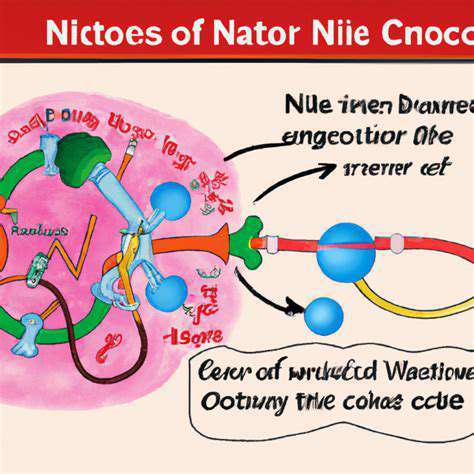Imagine a microscopic courier racing through your bloodstream - that's nitric oxide (NO) in action. This remarkable molecule serves as one of nature's most versatile cellular messengers. Produced primarily by the delicate endothelial cells lining our blood vessels, NO's gaseous form gives it unique advantages. Unlike bulkier signaling molecules, NO slips effortlessly through cell membranes, delivering urgent messages to neighboring cells within milliseconds. What makes NO truly extraordinary isn't just its speed, but the breadth of biological processes it influences - from blood pressure regulation to memory formation.
The secret to NO's effectiveness lies in its elegant simplicity. As a small, unstable molecule, it can't store messages like complex proteins. Instead, it works through immediate, localized effects that cells must constantly renew. This creates a dynamic signaling system that responds second-by-second to the body's changing needs. When you exercise, for instance, NO production spikes to meet increased oxygen demands - a perfect example of biological adaptation in real-time.
The Impact of Nitric Oxide on Blood Vessels
Picture your circulatory system as a network of intelligent pipes that automatically adjust their diameter. This isn't science fiction - it's the daily work of nitric oxide. Every time your heart beats, endothelial cells release NO to relax vascular smooth muscle, creating the vital process called vasodilation. This biological marvel explains why beetroot juice, rich in NO precursors, became a favorite among Olympic athletes - the improved blood flow can enhance performance by 1-2%, a massive difference at elite levels.
The vascular effects of NO reveal a fascinating paradox. While we measure blood pressure in steady numbers, our vessels are actually in constant flux, with NO acting as the chief regulator. When this system falters, the consequences extend beyond hypertension. Researchers now link NO deficiency to erectile dysfunction, preeclampsia in pregnancy, and even the progression of diabetes-related complications. This explains why cardiologists increasingly view NO as a master key to vascular health.
Nitric Oxide and its Role in Neurotransmission
Unlike conventional neurotransmitters that travel in one direction across synapses, NO breaks all the rules. It functions as a retrograde messenger - essentially sending feedback signals from the receiving neuron back to the sender. This unusual pathway plays a critical role in long-term potentiation, the neurological foundation of learning and memory. Some neuroscientists speculate that NO's volatility makes it ideal for marking particularly important neural connections - like a highlighter for crucial memories.
The brain's use of NO reveals nature's efficiency. While most neurotransmitters require complex packaging and recycling systems, NO is produced on-demand from readily available amino acids. This may explain why NO-mediated signaling appears in creatures as simple as sea slugs, suggesting it represents one of evolution's oldest communication systems that remained essential even as nervous systems grew more complex.
Nitric Oxide and Cellular Function: Beyond Circulation and Nervous System
Few molecules demonstrate the principle of biological multitasking like nitric oxide. In the immune system, macrophages weaponize NO to destroy invading bacteria - a tactic so effective that some pathogens have evolved specific defenses against it. Meanwhile, in the digestive tract, NO helps coordinate the rhythmic contractions of peristalsis. Even mitochondria, the cellular powerplants, use NO signals to adjust energy production based on current demands.
The ongoing exploration of NO's roles continues to surprise researchers. Recent studies suggest it may influence stem cell differentiation, affect cancer cell metabolism, and even participate in the body's circadian rhythms. This expanding understanding positions NO research at the exciting intersection of multiple medical specialties, from cardiology to neurology to immunology. As investigation continues, we're likely to uncover even more ways this simple molecule shapes our complex biology.

